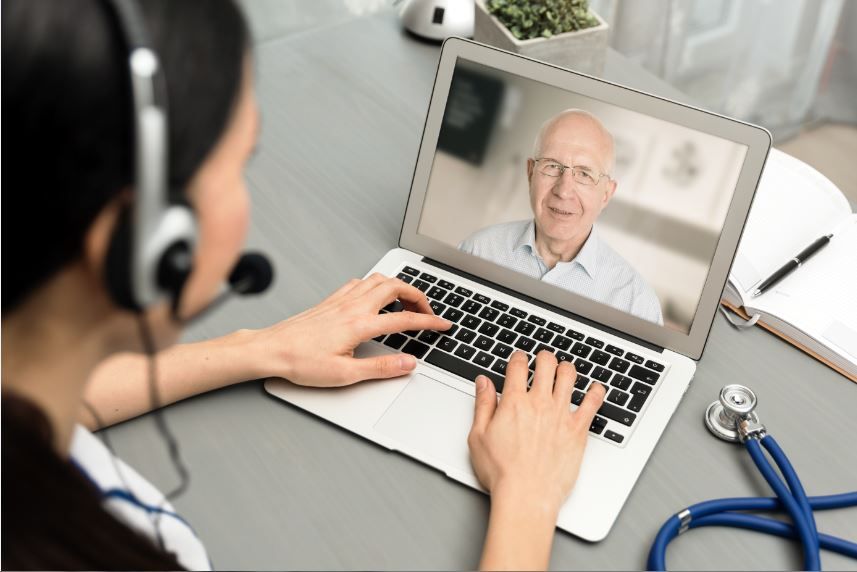- Clinical Technology
- Adult Immunization
- Hepatology
- Pediatric Immunization
- Screening
- Psychiatry
- Allergy
- Women's Health
- Cardiology
- Pediatrics
- Dermatology
- Endocrinology
- Pain Management
- Gastroenterology
- Infectious Disease
- Obesity Medicine
- Rheumatology
- Nephrology
- Neurology
- Pulmonology
New Doctors Could be Telehealth Natives
Consider all the first year medical students introduced to patient care in 2020 via computer screens and monitors. A young telehealth native tells her story.
©Proxima Studios/stock.adobe.com

Prior to the COVID-19 pandemic, telemedicine was rarely used to see patients in the American healthcare system. It was used mostly to provide access to health care in rural communities and for those that had difficulty accessing health care.
In a survey done by the COVID-19 Healthcare Coalition, 92% of physicians averaged less than 5 telemedicine visits per week prior to the pandemic.1 Part of the hesitance then was comfort and familiarity with face-to-face clinic visits which for many clinicians was the only care delivery system they had ever used. Physicians knew how to navigate the billing world when it came to in-person patient encounters. Further, training staff and obtaining appropriate technological resources to conduct telemedicine was costly. There also were long-standing barriers that made conducting telemedicine cumbersome, including rules on services allowed over telehealth, licensing in different states, and the ability to take on new patients virtually.2
With the rapid onset of the pandemic and the immediate emphasis on minimizing person-to-person spread of SARS-CoV-2, health care professionals had no choice but to switch to remote appointments. The federal government quickly eliminated many of the barriers to telemedicine, and hospitals and clinics across the United States rapidly adapted to the virtual world.
I began my medical school experience during the global pandemic and have seen firsthand the explosive increase in use of telemedicine.
During the first 6 months of my education, my only exposure to patients was through telemedicine. These experiences were unique to me and my classmates, exposing us to near exclusive use of telemedicine, unlike any prior class of medical students. From early on, I was navigating the different technologies involved in telehealth. I learned how to accurately chart and document telehealth appointments and understood what kind of services could be provided. These virtual visits taught me to be creative, teaching patients how to perform certain physical exam maneuvers on themselves. I discovered ways to build rapport and trust with a new patient all through a screen.
With technology, there are always unique difficulties. I learned how to prevent many troublesome issues and also developed the patience needed to work with patients through the problems that did arise. The incorporation of telehealth into my curriculum has changed my own perspectives on telehealth. I am more likely than I was before entering medical school to incorporate it into my own practice in the future.
As the world begins to open again and life begins to look more like that before the pandemic, I hope that medical schools will continue to incorporate education on telehealth into their curricula. It is important for the medical profession to keep up with new technologies, and to integrate them when and where they can be most valuable. Telehealth is a step in that direction. It is possible, after the height of the pandemic, that use of telehealth will continue to grow as an option for patients to access health care.
It is important to train future physicians on best practices in telemedicine so that they see it as another tool in providing the best healthcare possible to our patients.
Cynthia Li is a member of the class of 2024 at the Medical College of Georgia at Augusta University in Augusta, Georgia.
References
1. The COVID-19 Healthcare Coalition Telehealth Impact Study Work Group. (2020, November 16). Telehealth Impact: Physician Survey Analysis. COVID-19 Healthcare Coalition. Published online November 16, 2020. Available at https://c19hcc.org/telehealth/physician-survey-analysis/
2. Showalter, G. Telehealth Before and After COVID-19. Caravan Health. Published online May 7, 2020. Available at https://caravanhealth.com/CaravanHealth/media/Resources-Page/Telehealth_BeforeAfter_COVID19.pdf
No Rx Required for COVID-19 Vaccination But ACIP Calls for Better Informed Consent Process
September 22nd 2025The ACIP on September 19 narrowly voted against requiring a prescription to get the shot but urged more detailed discussion of vaccine risks during shared decision making conversations.
